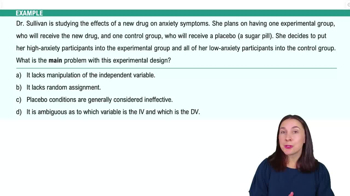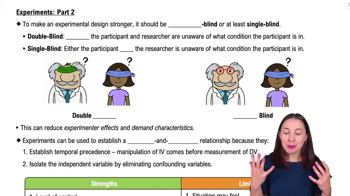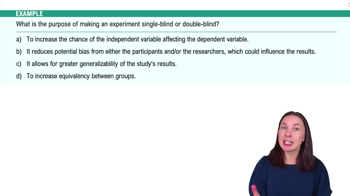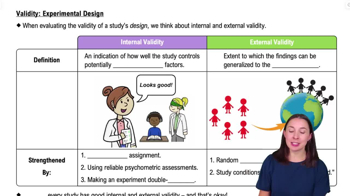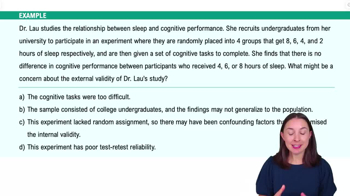Table of contents
- 1. Introduction to Psychology1h 43m
- 2. Psychology Research2h 20m
- 3. Biological Psychology2h 41m
- 4. Sensation and Perception28m
- 5. Consciousness and Sleep32m
- 6. Learning41m
- 7. Memory34m
- 8. Cognition37m
- 9. Emotion and Motivation35m
- 10. Developmental Psychology33m
- 11. Personality48m
- 12. Social Psychology41m
- 13. Stress and Health41m
- 14. Psychological Disorders44m
- 15. Treatment47m
2. Psychology Research
Intro to Research Methods
Struggling with Psychology?
Join thousands of students who trust us to help them ace their exams!Watch the first videoMultiple Choice
The _____ is an adaptation of Charles Darwin's theory that when an emotion is expressed freely on the face, the emotion intensifies.
A
facial feedback hypothesis
B
cognitive interpretation of face motions
C
cognitive mediational theory
D
common sense theory
 Verified step by step guidance
Verified step by step guidance1
Begin by understanding the context of the problem, which involves theories related to emotions and facial expressions.
Identify the key concept: the idea that expressing an emotion on the face can intensify that emotion.
Recall Charles Darwin's contributions to the study of emotions, particularly his work on the expression of emotions in humans and animals.
Consider the 'facial feedback hypothesis,' which suggests that facial expressions can influence emotional experiences, aligning with the idea that expressing an emotion can intensify it.
Evaluate the other options: 'cognitive interpretation of face motions,' 'cognitive mediational theory,' and 'common sense theory,' and determine which aligns best with the concept of facial expressions intensifying emotions.

 1:46m
1:46mWatch next
Master Roadmap of the Lesson with a bite sized video explanation from Hannah Gordils
Start learningRelated Videos
Related Practice










